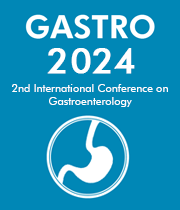Title : The dual character of intestinal metaplasia in the occurrence and development of gastric dysplasia
Abstract:
Background:
Gastric dysplasia is not only a precancerous lesion, but also a neoplastic lesion. Although the relationship between gastric intestinal metaplasia (IM) and gastric cancer is currently controversial, gastric dysplasia can be detected in intestinal metaplastic glands. It is still not very clear that the incidence and biological activity characteristics of dysplasia in intestinal metaplastic glands and non-intestinal metaplastic glands. The aim of this study was to explore the probability and proliferative activity of gastric dysplasia in intestinal metaplastic glands and non-intestinal metaplastic glands.
Methods:
8514 specimens from 6340 patients treated with gastric mucosa biopsy or endoscopic submucosal dissection (ESD) were reviewed by three pathologists who classified the grade of IM and dysplasia according to the Updated Sydney System and the WHO Classification of Digestive System Tumours (2019). 15 specimens of low-grade dysplasia (LGD) with IM and 15 specimens of LGD without IM were used to study the proliferation ability of dysplastic cells in intestinal metaplastic glands with dysplasia by Ki67 immunohistochemical staining and AB-PAS histochemical staining.
Results:
Gastric dysplasia was found in 394 samples, namely, 310 (78.7%) LGD and 84 (21.3%) high-grade dysplasia (HGD) samples. The number of samples of intestinal metaplastic glands with dysplasia was 337, while the number of samples with only dysplasia was 57. Samples with dysplasia and IM accounted for 11.8% (337/2850) of samples with IM, and 85.5% (337/394) of samples with dysplasia. In samples with mild, moderate, and severe IM, the detection rates of dysplasia in intestinal metaplastic glands were 9.2% (153/1656), 14.8% (144/970) and 17.9% (40/224), respectively. In the glands with LGD and IM, the Ki67 expression index of dysplastic cells was significantly lower than that in the glands with LGD but no IM. In the glands with LGD and IM, the Ki67 expression index of dysplastic cells decreased as the proportion of goblet cells increased.
Conclusion:
The results showed that even though intestinal metaplastic glands are more prone to dysplasia than non-intestinal metaplastic glands, the higher the proportion of goblet cells in dysplastic glands, the lower the proliferation index of dysplastic cells.
Audience Take Away:
-
To our knowledge, this is the first to propose the viewpoint of gastric intestinal metaplastic dual roles in the occurrence and development of dysplasia.
-
Although our experiment did not directly demonstrate the inhibitory effect of goblet cells on dysplastic cells, it indirectly reflected that the proliferation ability of dysplastic cells may be influenced by goblet cells.
-
Our experimental results not only provide a theoretical basis for the clinical management of gastric intestinal metaplasia but also point to a new research direction related to the development mechanism of gastric dysplasia.



